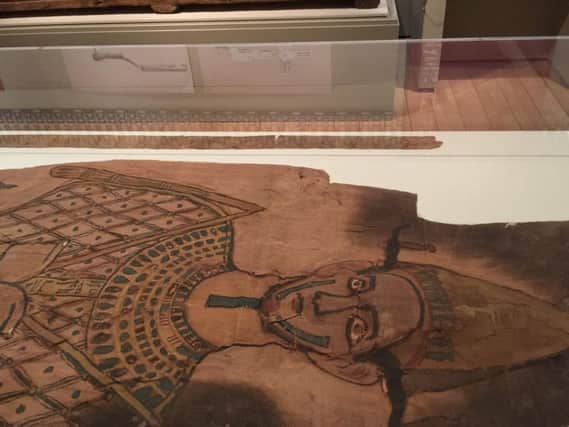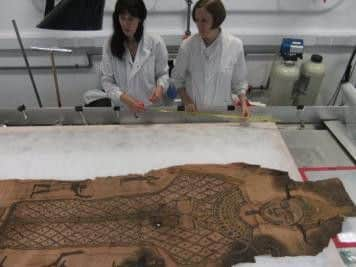Mummy shroud found in museum store goes on display


The lots archaeological treasure, which was discovered wrapped up inside a Second World War service envelope, is the star exhibit in a new show devoted to ancient Egyptian treasures.
The fragile textile, believed to date from 9BC, was accompanied with a hand-written note from a curator, who worked at the museum in the 1940s, explaining its ancient Egyptian origins.
Advertisement
Hide AdAdvertisement
Hide AdIt was brought to Edinburgh in the mid-19th century by celebrated Scottish archaeologist Alexander Henry Rhind, along with a host of other treasure recovered from a tomb carved into the desert cliffs opposite the city of Thebes.


However the shroud, which was usually wrapped around a mummified body for protection, was never put on public display after staff working at the museum during the Second World War failed to realise its importance.
The full-length shroud had to be gently humidified by experts at the museum before it was carefully unfolded over the course of almost 24 hours to reveal a heiroglyphic inscription of the god Osiris.
The shroud was wrapped around the mummified body of the previously unknown son of a high-ranking city official, Montsuef, and his wife, Tantuat.
Advertisement
Hide AdAdvertisement
Hide AdThe tomb was built around 1290 BC as an intended final resting place of a chief of police and his wife, whose statue features in the exhibition. However it was looted and reused several times before it was finally sealed in the early first century AD.


The exhibition also features an elaborate canopy, designed to replicate an Egyptian temple, which was used to transport the body of Montseuf to his tomb in his funeral procession, along with his mummy mask and a gold wreath.
Dr Margaret Maitland, senior curator, said: “The shroud wasn’t mislaid, as such. It was just put away in storage in 1946 and recorded as a group of Egyptian textiles, which obviously doesn’t sound as exciting as a full-length mummy shroud.
“It was probably wrapped up when it was transferred here from the National Museum of Antiquities on Queen Street in the 1930s. I don’t think anyone at the time would have realised what it was. It’s only now we’ve bothered to read the inscription and realised it belonged to the son of Montseuf.”